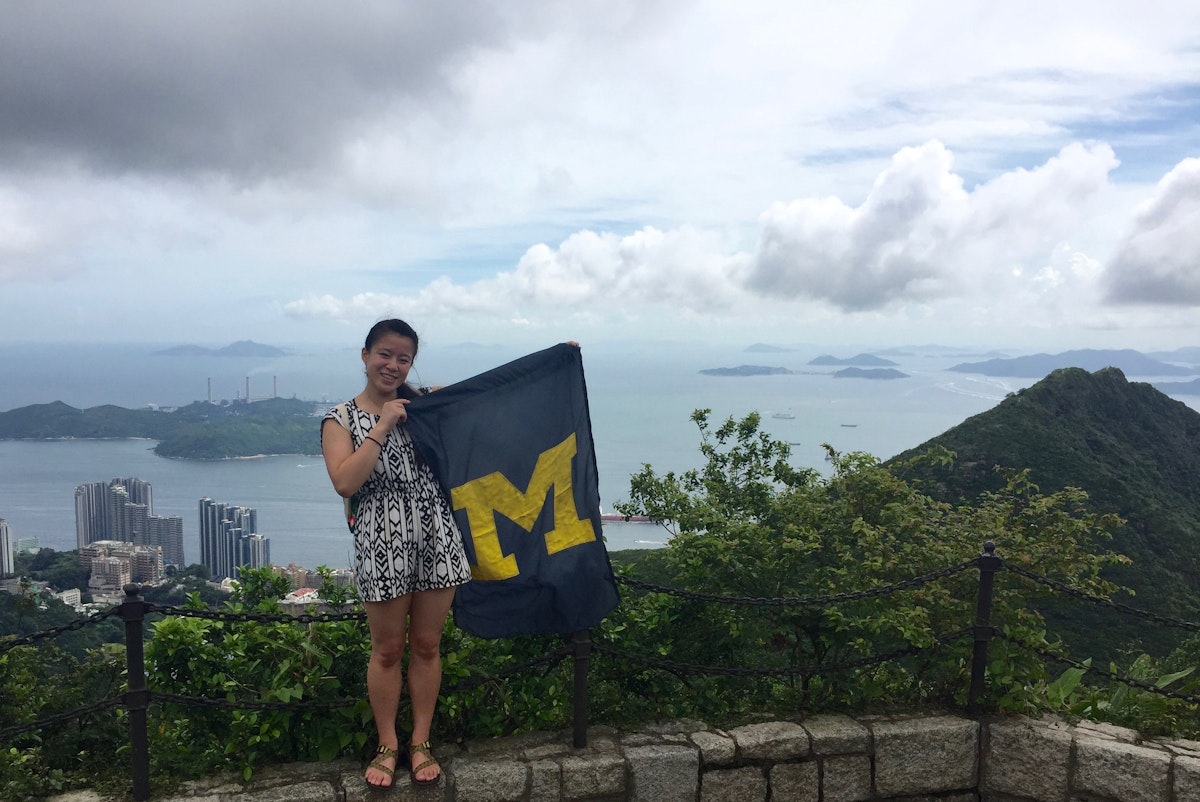International Experience: Taylor Houlihan’s Beijing
Taylor Houlihan (BFA ‘18) is a digital fabrication artist and painter. This summer, to fulfill the International Experience requirement at Stamps, Houlihan studied film, art, Chinese language, and economics at Renmin University in Beijing.
How was your education different in Beijing than in the US?
One of the main reasons I wanted to study economics in China was because I knew that the Western perspective of China’s government is skewed. I wanted to hear from well-known economics professors about the Cultural Revolution, about Mao, and about the government’s effect on society. I was also interested in their censorship and how that played into their art.
Did you notice any differences in the art being made there?
When I went to the Beijing art district there was this gallery, Beijing 798, where there were many oil paintings of Mao and snapshots from the Cultural Revolution. The paintings were wonderful but it was all red and orange and yellow because those are communist China colors. There were huge wall-to-wall paintings of Mao and old men swimming — stuff like that. I thought it was very interesting because the government still has such a huge influence on what artists make.
It wasn’t all just paintings of Mao, though. Many artists in the Beijing 789 district address western culture in their work — it is highly influential. The Yang Gallery was featuring the artist, Gao Qiang. He investigates the dynamics of the west’s historically Eurocentric world-view and China’s historically isolationist world-view. Also, Post-Intellectualism, an exhibition at the Springs Center of Art, included artists like Ai Weiwei, Qiu Zhijie, Xu Bing, and Zhan Wang. The exhibition brought installation, video, sculptures, and modern ink paintings, highlighting a mixture of Chinese and Western ideologies, aesthetics, and philosophies.

Were there any specific artists who stood out to you?
The artist Yao Lu does these photo manipulations of traditional paintings of beautiful Chinese landscapes. If you look closely, it’s all garbage with green netting over it but it’s photographed to seem from a distance like beautiful China. If you go closer, you can see all the trash — it may be a response to the country’s rapid industrialization. It was also great to see work by Ai WeiWei and XuBing.
Did your art change after you got back?
I think it made me much more aware. With this election, there’s so many things you wouldn’t be able to get away with in China. You wouldn’t be able to make really sadistic drawings of Trump or Hillary. You’d get in big trouble for that. I don’t know if it changed my art but it definitely made me more aware as an artist.
What was it like coming back after a month abroad?
It was really odd because I have a Chinese racial phenotype, but I fell in love with being a foreigner. Being in China was a different experience because I finally blended in in a way that my Western friends who were international students there didn’t. It was weird seeing all these people that look like you — but then you come to the U.S. and it’s not the same. Also, I miss the great food—the cheap food—in China. But I’m glad to be home.

Interview by Emma Bergman (BFA Interarts Performance ’17).